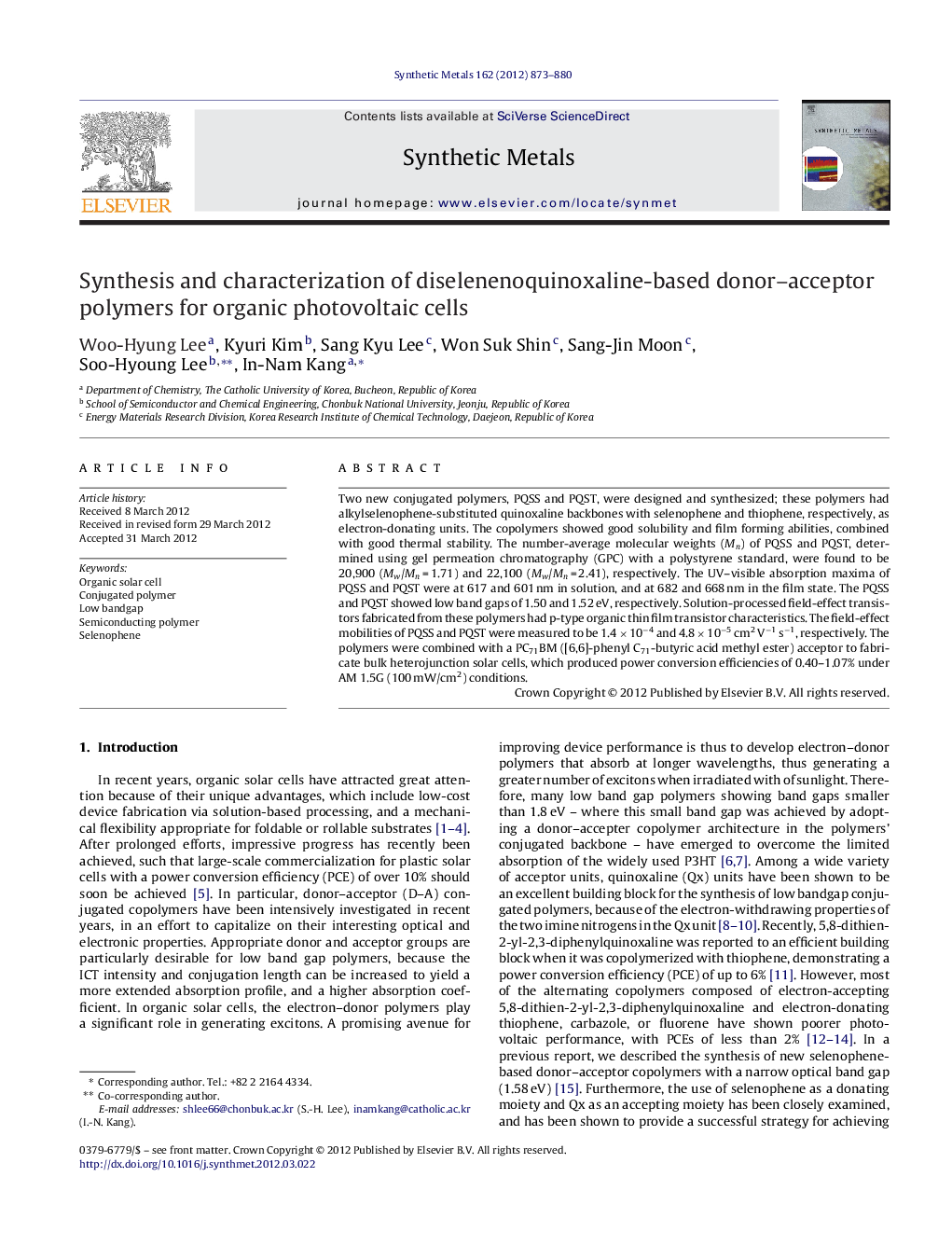| Article ID | Journal | Published Year | Pages | File Type |
|---|---|---|---|---|
| 1442134 | Synthetic Metals | 2012 | 8 Pages |
Two new conjugated polymers, PQSS and PQST, were designed and synthesized; these polymers had alkylselenophene-substituted quinoxaline backbones with selenophene and thiophene, respectively, as electron-donating units. The copolymers showed good solubility and film forming abilities, combined with good thermal stability. The number-average molecular weights (Mn) of PQSS and PQST, determined using gel permeation chromatography (GPC) with a polystyrene standard, were found to be 20,900 (Mw/Mn = 1.71) and 22,100 (Mw/Mn = 2.41), respectively. The UV–visible absorption maxima of PQSS and PQST were at 617 and 601 nm in solution, and at 682 and 668 nm in the film state. The PQSS and PQST showed low band gaps of 1.50 and 1.52 eV, respectively. Solution-processed field-effect transistors fabricated from these polymers had p-type organic thin film transistor characteristics. The field-effect mobilities of PQSS and PQST were measured to be 1.4 × 10−4 and 4.8 × 10−5 cm2 V−1 s−1, respectively. The polymers were combined with a PC71BM ([6,6]-phenyl C71-butyric acid methyl ester) acceptor to fabricate bulk heterojunction solar cells, which produced power conversion efficiencies of 0.40–1.07% under AM 1.5G (100 mW/cm2) conditions.
Graphical abstractFigure optionsDownload full-size imageDownload as PowerPoint slideHighlights► We synthesized alkylselenophene-quinoxaline based new low-bandgap copolymers. ► Optical and electrochemical properties of the polymers were well characterized. ► Photovoltaic properties of the selenophene-quinoxaline based copolymers were examined.
